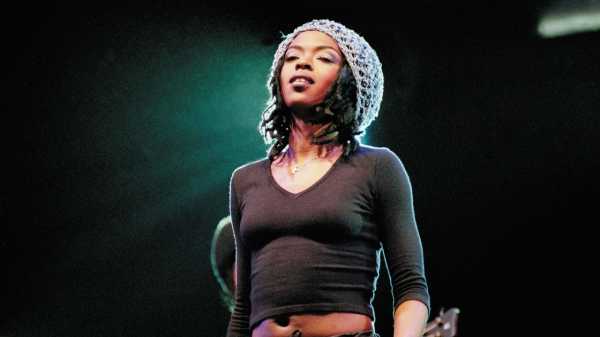
Listen to the national anthem of dedication Drake “so good”, which was released last Friday, and Cardi B “be careful”, which was released in late March, I was taken back in 1998. Via something like chance, with two single beds, both have samples from the “ex-factor Lauryn hill,” a track from his solo debut album, “time distorts the picture of Lauryn hill.” A work of love, God, and the parent ego, the album is a modern masterpiece of Christian poetics, which prompted worship as a dissertation on hip-hop and soul. In the two decades since its release, however, hill has become a volatile character. There are twenty-three-year-old hill, whose rhythms, lyrics, and his voice was sampled about two hundred times. And then there is this Hill, the black female artist of exquisite sensitivity to the material world, which apparently triggered her move away from him.
After the disbanding of the Fugees in 1997, hill, who spent his childhood in a mixed race suburb of new Jersey called for the Tuff Gong Studio Bob Marley, built in Kingston, Jamaica, to record a solo album. At the time, hill was pregnant with Marley’s son, Rohan. In “a distorted picture” has arrived, as the direction of the woman who talked about herself as the virgin Mary, drawing by touching the “her stomach is overloaded,” she sings in “Zion”, a translation of an ancient connection between the onset of motherhood and creativity flow. (While most artists who sample hill eclipsed her own dexterity of the hill only sampling showed her musical ability; “the ex factor” takes from the Wu-Tang clan “can it all be so simple”.)
Part of the sampling points the hill is it a cult of seriousness. As an artist, she represents purity almost to abstinence. Two years after the release of her debut, she broke up with her control and fell with a spiritual guru. She spat on the wealth and the sex of the day through messages on “MTV disconnected number 2.0,” a live acoustic effort she released in 2002, which extends provocation “distorts” alternately prophetic and parody purposes. Since then she has occasionally released singles, including “passion” for Mel Gibson movie “the passion of the Christ” and not another album. In a few interviews she gave, she stressed that it considers not only the music industry but the whole of Western culture is incompatible with her worldview. “When people capitalize on a persona, they forget there is a man there,” she said in a statement in 2013, before receiving her three-month prison sentence for tax evasion.
These days, when hill performs, it is usually too late—after a show in Atlanta in 2016, she blamed the need to “align your energy”—and sometimes leaves early. (For many years, I was waiting for a combined twelve hours for her to go on stage.) When she makes a full set, it often causes confusion—rework songs until they’re almost unrecognizable, for example. “Ex-factor”, most likely about her break-up with his former colleague by Wyclef Jean, the growth and plaintive, but recently, hill translated the song into furious Bossa-Nova. And while I resist the narrative that the Hill crazy or lost that she failed because she chose not to participate in that leads to its deformation. Very few artists are making work with such pulse, and that achievement seems even more important in the era of flash-in-pan releases.
Interestingly, Cardi B and Drake both an artist who, it can be assumed, will weaken the Hill, the famous Evangelist of the “real hip hop”. Hill exactly a traditionalist, which people cite when they say that KARDi is not a real musician—and twenty-five-year-old “new rap celebrity” knowingly causes acrylic nails siren who hill warns people against “Doo Wop (that thing).” And yet, for all that rap can be changed, the mountain connects the two women, with chip hill “ex-factor” detour to the bridge to “be careful” Cardi B converts the Hill in awe of being alone in warning: “boy, you better treat me carefully, closely.” Drake, meanwhile, a classy capitalist who looks at music as a trend-forecasting business tends to use female vocals from the nineties to defend their emotional insight. By sampling the hill, and the example of other female celebrities—Tracy Ellis Ross, Issa RAE—who to show off in a music video, he appropriates feminist zeal for carefree summer track. “Well for that,” Drake launched his ball and hit a finger in Louisiana; the song begins with meetings in New Orleans, a veteran of bounce big Freedia, and then quickens and stutters the vocal hill.
Influential art has always spawned a second life that are contrary to their origin. And there’s a quiet convergence even between the hill and Cardi B—two figures that could be opposites in tone, attitude, dress, and everything else. Last year, with “Bodak yellow” Cardi B became the first female rapper from the hill to have a Number 1 single on the Billboard hot 100. Last week’s episode of “Saturday night live” as KARDi conducted “careful,” the camera slowly zoomed in to reveal her pregnancy. Women artists are still criticized for the false choice of motherhood for a career; in violation of KARDi, I could not remember the peak of the hill, which was sung in“Zion” is about finding joy in the new life of her son. As I watched Cardi B on Saturday evening, I imagined it in his youth, captured the hill in my childhood, taking from her what she needs, she starts paving its way.
Sourse: newyorker.com






